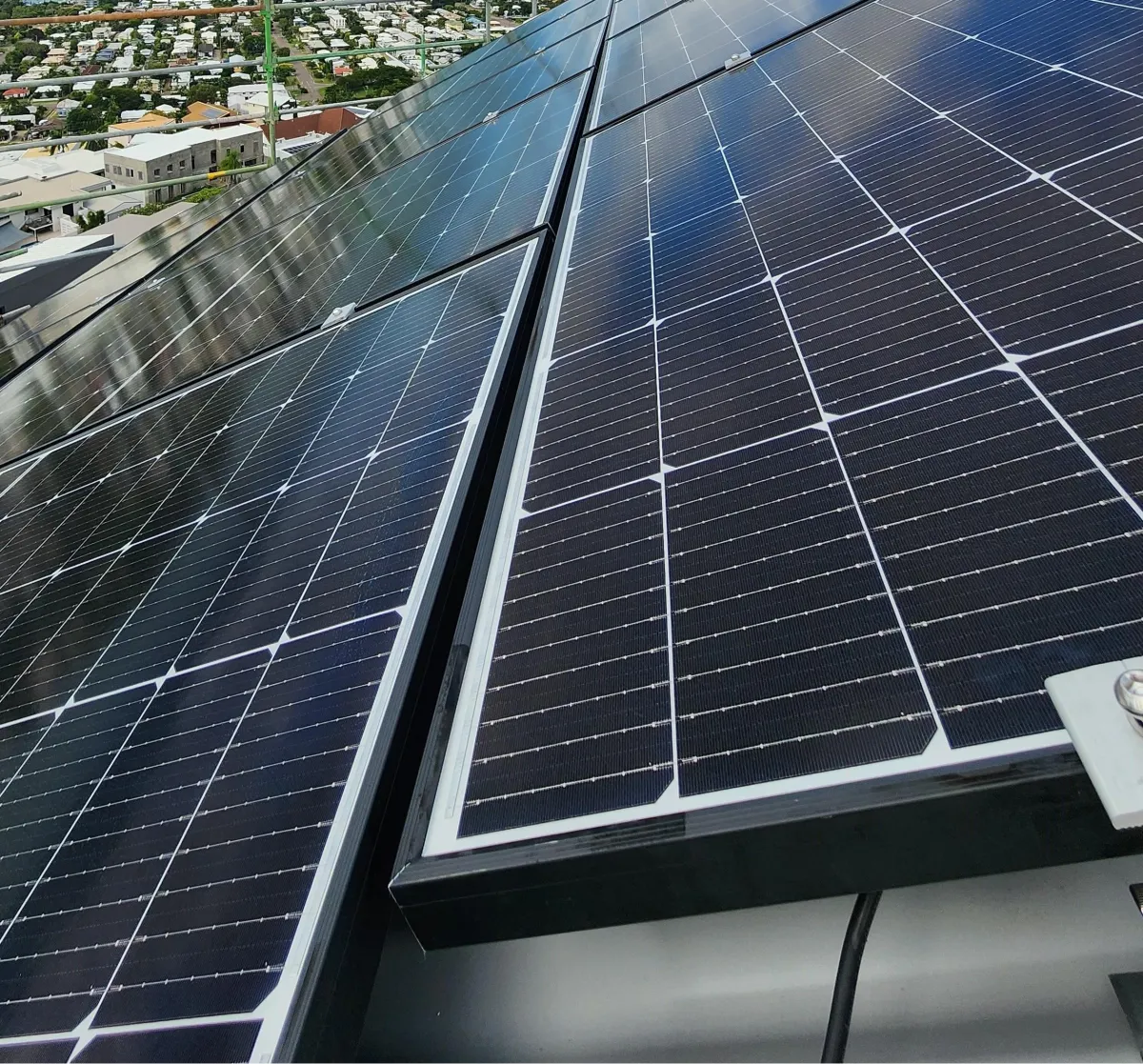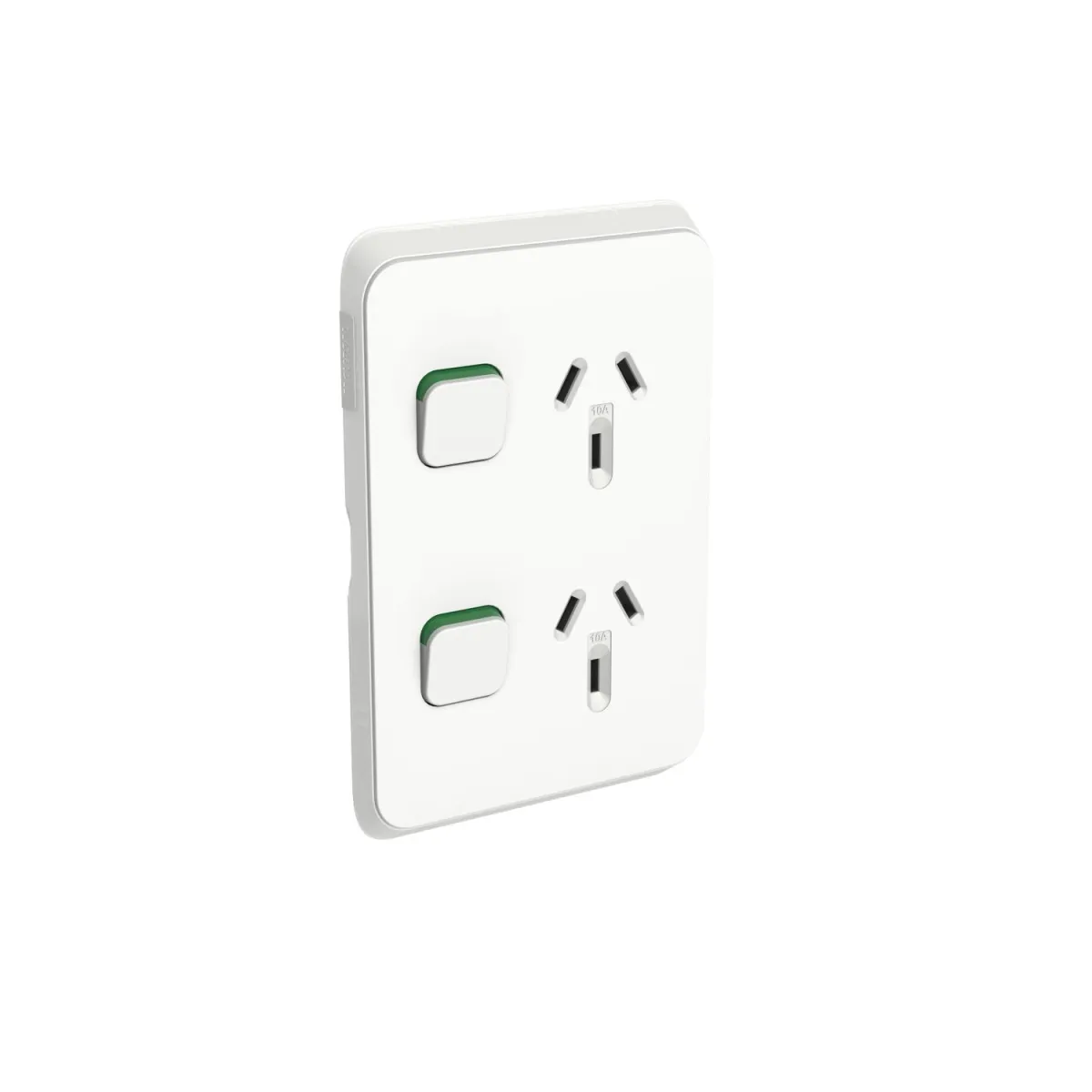Solar. Electrical. Safety. Sorted.

Solar Installations
It’s not just about hugging the planet—it’s about hugging your wallet.
Whether you’re juicing up your home or supercharging your business, our solar systems are designed to flex max efficiency with zero nonsense.
From low-profile residential setups to industrial-grade commercial rigs, we’ve got you hooked up with clean, dependable energy that doesn’t quit
Brighten your future—get a solar quote that works as hard as the sun
Photovoltaic (PV) Solar Panels
How They Work, Components, Types, Advantages, and Applications

How Photovoltaic Solar Panels Work
Photovoltaic (PV) solar panels convert sunlight directly into electricity through the photovoltaic effect. Here's a step-by-step breakdown of the process:
Photovoltaic Effect:
Sunlight strikes the surface of the solar panel, energizing electrons in the semiconductor material (typically silicon) within the PV cells. This energy allows electrons to break free from their atoms, creating a flow of electricity
Electric Current Generation:
The freed electrons move through the material, generating direct current (DC) electricity. Metal conductive plates on the sides of the cells collect this current and transfer it to wires.
Inversion to AC:
Most homes and businesses use alternating current (AC). Therefore, the DC electricity from the panels is sent to an inverter, which converts it into AC electricity.
Distribution:
The AC electricity can be used to power appliances or fed back into the electrical grid, depending on the system setup.
I Need Solar ASAP!
Want a solar setup as sharp as your wit? Request a quote and let’s make it happen
Types of Photovoltaic Solar Panels
Photovoltaic solar panels are a cornerstone of renewable energy, offering clean, reliable, and sustainable electricity. With diverse applications and numerous advantages, they are a key solution for reducing carbon footprints and achieving energy independence.
Different types of PV panels offer unique benefits
Types of Photovoltaic Solar Panels
Monocrystalline Panels:
Made from a single crystal structure. Known for high efficiency and space efficiency but are typically more expensive.Polycrystalline Panels:
Made from multiple silicon crystals fused together. They are more affordable but slightly less efficient.Thin-Film Panels:
Created by depositing a thin layer of photovoltaic material on a substrate. These panels are lightweight and flexible but generally less efficient.
Components of Photovoltaic Solar Panels
PV Cells:
Semiconductor materials (usually silicon) that absorb sunlight and convert it into electricity.
Glass Cover:
Protects PV cells from environmental elements while allowing sunlight to pass through.
Back Sheet:
Provides insulation and shields the PV cells from moisture and damage.
Frame:
Typically made from aluminum, it provides structural support and durability.
Junction Box:
Located on the back, it houses electrical connections and ensures efficient power flow.
Advantages of Photovoltaic Solar Panel
Renewable Energy Source:
Sunlight is abundant, sustainable, and free.
Reduced Electricity Bills:
Generate your own electricity and lower energy costs.
Low Maintenance:
Minimal upkeep is required after installation.
Environmental Benefits:
Reduce reliance on fossil fuels and decrease greenhouse gas emissions.
Energy Independence:
Produce your own power and reduce dependence on the grid.
Components of Photovoltaic Solar Panels
PV Cells:
Semiconductor materials (usually silicon) that absorb sunlight and convert it into electricity.
Glass Cover:
Protects PV cells from environmental elements while allowing sunlight to pass through.
Back Sheet:
Provides insulation and shields the PV cells from moisture and damage.
Frame:
Typically made from aluminum, it provides structural support and durability.
Junction Box:
Located on the back, it houses electrical connections and ensures efficient power flow.
What Size System Will You Need?
Figuring out the right size solar system isn’t rocket science, but it’s not a guessing game either.
Step one: check your electricity bills—those numbers (in kWh) hold the truth about your power habits.
Step two: Think big picture. More people in the house? Electric car on the horizon? Battery storage dreams? Factor it all in.
Step three: Have our team scope your roof. Direction, tilt, shade—it all matters. We'll crunch the numbers, optimize the setup, and make sure your system isn’t just good—it’s overpowered.
Size of Home

Small Home
1 or 2 people

Average Home
3 to 4 people

Large Home
5+ people
Energy Usage
Using a small amount of power
Typically a quarterly power bill less than $300
Using a medium amount of power
Typically between $400 and $600 a quarter power bills
Using a large amount of power
Typically power bills larger than $700 a quarter
Recommended System Size
2kw
3kw
5kw
6.6kw
8.5kw to 13.2kw
How Much can you Expect to Save?
Cut your electricity bill by up to $2.97 a day
Cut your electricity bill by up to $6.20 a day
Cut your electricity bill by up to $12 a day
Solar Upgrades
Upgrading a solar system can enhance its efficiency, increase energy production, and extend its lifespan.
Here are some key considerations for solar system upgrades.
Panel Upgrades
Higher Efficiency Panels: Replacing older solar panels with newer, more efficient models (like monocrystalline panels) can significantly increase energy production in the same space.
Bifacial Panels:
These panels can capture sunlight from both sides, enhancing overall output, especially in areas with reflective surfaces
Inverter Upgrades
String Inverters:
If using older string inverters, consider switching to newer, more efficient models that can optimize performance for each panel individually.
Hybrid Inverters:
These can manage both solar and battery storage systems, enabling better energy management and usage during peak times or outages.
Battery Storage Systems
Adding or Upgrading Batteries:
Installing or upgrading a battery storage system allows for storing excess energy generated during the day for use at night or during power outages. Newer lithium-ion batteries have higher capacities and longer lifespans compared to older technologies.
Smart Energy Management: Implementing smart meters can optimize when to charge or discharge the battery based on times or household consumption.
monitoring Systems
Smart Monitoring:
Upgrading to a modern monitoring system allows for real-time tracking of energy production and consumption. This can help identify issues quickly and optimize energy use.
Data Analytics:
Some systems offer data analytics that can provide insights into energy usage patterns, enabling better energy management and savings.
System Expansion
Adding More Panels:
If your roof space allows, you can expand your solar array to increase energy production, especially if your energy needs have grown since the original installation.
Upgraded Inverter Capacity:
A larger inverter supports additional panels and optimizes efficiency.
Future-Proofing:
Prepare your system for evolving energy needs or potential grid feed-in tariff changes
Racking and Mounting Systems
Roof Reinforcements:
For older homes, it may be necessary to reinforce the roof structure before installing additional panels.
Solar Rail and Feet:
Upgrading your solar rails ensures durability against corrosion and harsh weather, compliance with current safety standards, and easier expansion for future system upgrades. Better rails mean better performance, security, and long-term reliability.
Utility Incentives and Rebates
Research Incentives:
Many regions offer incentives, rebates, or tax credits for upgrading solar systems. Research local programs to maximize savings on upgrades.
Energy Storage Systems
Your solar’s MVP? Smart battery storage. Bank your power and flex it whenever you want.
If you’ve invested in solar energy, you’re already ahead in the race for cleaner, cost-efficient power. But let’s be real—solar doesn’t always align perfectly with your energy needs. Winter brings shorter days, cloudy skies, and reduced solar output. And even during peak sunny days, your system might produce energy when you’re not home to use it. That’s where battery storage comes in to level the playing field.
A solar battery storage system allows you to store excess electricity generated by your solar panels during the day and use it when you need it most—whether that’s after sunset, during a storm, or in the middle of a blackout. Our team of energy experts can design a system tailored to your household’s needs, unlocking the full potential of your solar investment
energy independance
Say goodbye to full reliance on the grid
With a battery system, you can bank the energy your solar panels produce and use it on your terms—at night, on cloudy days, or during outages. This gives you a reliable source of power, no matter what the grid is up to.


Cost Savings
Beat the electric companies at their own game
By using stored energy during peak pricing hours, you can cut down on high utility bills. In areas with time-of-use rates, charge your battery when prices are low and use it when they spike
Maximized Solar Efficiency
Power outages? Not your problem
Without a battery, surplus solar energy is sent back to the grid—often at rates that don’t favor your wallet. A battery lets you keep more of your own energy, making your solar system work harder for you.
A solar battery can provide backup energy to keep essential appliances running—think lights, your fridge, and even your Wi-Fi router.


Boosted Property Value
A home with a solar battery system is a hot commodity
Buyers are increasingly looking for energy-efficient and self-reliant properties, making your investment not only cost-saving but also a selling pointEnergy prices aren’t going down anytime soon.
By maximizing your use of solar energy, you’re insulating yourself from future price hikes and maintaining control over your energy expenses.
The Future of Solar Is Storage
Solar panels are just the beginning
A battery storage system transforms your setup into a full-fledged energy solution, giving you flexibility, savings, and peace of mind. Whether you’re looking to maximize efficiency, gain energy independence, or reduce your carbon footprint, battery storage is the next step toward making your home or business truly sustainable.
Ready to take control of your energy? Contact our team today to design a battery storage system that works for you..

Details Define Us
Precise and creative solutions.

Extraordinary Care
Honesty and transparency.

Exceptional Standards
Top-notch products and services.

FOLLOW US
COMPANY
CUSTOMER CARE
QUICK LINKS
Copyright 2025. Bonato Electrical & Solar. ABN: 39 648 590 032. All Rights Reserved.


